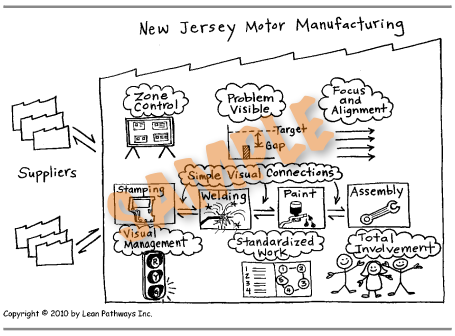(Book) Reviews: Worth reading? Absolutely!
Into the Silence: The Great War, Mallory, and the Conquest of Everest

- Author
- Wade Davis
- PUBLISHER
- Vintage Canada
- DATE
- October 2012
REVIEW
When I was sixteen years old, I flew to Winnipeg to attend a pan-Canadian convention on multiculturalism. The keynote speaker for the event was Canadian-born anthropologist, ethnobotanist, and National Geographic magazine photographer Wade Davis. Fourteen years later, I was browsing in Chapters one day and his name caught my eye on the paperback cover of "Into the Silence". Not knowing entirely what to expect, I decided to buy it and headed for the checkout. As it turns out, Davis had spent over a decade (the majority of the time since I saw him in Winnipeg!) meticulously researching primary resources and visiting Nepal and Tibet to recreate in a historically accurate yet fictional recreation of the life of Sir Mallory and the first conquest of Mount Everest.
The first few attempts (by the British) to climb to the top of Everest were made between 1921 to 1924. Rather than beginning his story at the base camp in 1921, Davis spends the first third of the novel describing the earlier experiences of the climbers as soldiers in the Great War (World War I) from 1914 to 1918. The result is a fantastic juxtaposition of two heroic yet at the same time raw and harrowing environments - the trenches of the front lines in France and the challenging peaks of Everest. Who exactly was Sir Mallory? Did he make it to the top of Everest? These are two questions best answered by picking up a copy of the book yourself! The paperback version includes many photographs that were the first images ever taken near the top of Mount Everest.
Similar to the book we reviewed Endurance: Shackleton's Incredible Voyage, "Into the Silence" has many lesson on leadership, teamwork, and perseverance that can be related back to management.
A Country of Cities: A Manifesto for an Urban America
A Country of Cities: A Manifesto for an Urban America

- Author
- Vishaan Chakrabarti
- PUBLISHER
- Metropolis Books
- DATE
- May 2013
REVIEW
“Smoke lowering down from chimney-pots, making a soft black drizzle, with flakes of soot in it as big as full-grown snow-flakes — gone into mourning, one might imagine, for the death of the sun. Dogs, undistinguishable in mire. Horses, scarcely better; splashed to their very blinkers.”
The above quote from Bleak House by Charles Dickens, paints a typical picture of cities as dirty, crowded, and unhealthy places during the industrialization and urbanization of nineteenth century Britain. Fast-forward to today and Vishaan Chakrabarti has turned that picture upside down, arguing urbanization and the growth of (thoughtfully) planned cities are the cure to environmental and social challenges the U.S. and other developed countries face today.
A Country of Cities is published in smooth glossy pages full of high-impact visuals and arguments supported by academic research and knowledge informed by the author’s position as a Director at Columbia University. Chakrabarti argues that population density provides opportunities to reduce our impact on the environment, especially through building mass transit infrastructure such as subway systems in highly populated areas to reduce the need for cars (and their exhaust pollution!) commuting to and from the suburbs. At the same time, population density provides opportunities for employment and for building advanced social infrastructure such as hospitals and education to improve quality of living.
The underlying theme woven throughout of A Country of Cities is a faith in what we can accomplish by living smart and working together to make improvements to how we live. We highly recommend this book and challenge you to pick up a copy and consider how these ideas apply to your own way of life! Though not directly related, some of the themes in this book can indirectly inform project management. For example, the innovation and compound benefits that stem from increased population density could suggest that intensifying cooperation and teamwork would produce similar positive results on a project!
ITIL® 2011 At a Glance

- Author
- John, O. Long
- PUBLISHER
- Springer
- DATE
- 2012
REVIEW
When I was asked to conduct an ITIL Foundation training, one of the first questions I asked was, is it version 3 and if so, 2007 or 2011? I needed to know, since I knew that in 2011 ITIL V3 was refreshed, I wanted to make sure I was well prepared and was referring to the correct version. While reviewing my material and notes I stumbled upon this this little book.
I must say a good and concise memory jogger as the author puts it. The book is indeed a memory jogger and assumes the reader has a good knowledge of ITIL V3. That is correct as without that previous knowledge some of the context gets lost.
The book is divided into 7 distinct sections, being an introduction, a list of all ITIL processes and a section for each of the 5 core elements; Service Strategy, Service Design, Service Transition, Service operation and Continual Service Improvement. Each section is set up the same way with sub sections, a Description of the Stage, Overview Diagram of the Stage, Key Concepts of the Stage and Processes. Each of the processes is then covered in the following subsections: process purpose; overview diagram; Key concepts; business process modelling notation (BPMN) flow and architecture considerations. It is the last section, the considerations in which the author allows him self to share some of his insights and opinions regarding the strengths and weaknesses of ITIL V3 2011. I thought they were insightful and to the point.
Overall certainly worth having in my ITIL toolkit and recommended to all trainers, practitioners and others interested in ITIL

Buy it if you like it!
We certainly did!
The Remedy: Bringing Lean Thinking Out of the Factory to Transform the Entire Organization

- Author
- Pascal Dennis
- PUBLISHER
- Wiley
- DATE
- 10 June 2010
- PAGES
- 272
- LANGUAGE
- English
- ISBN
- 978-0470556856
REVIEW
Following in the footsteps of foundational Lean books such as Lean Thinking (Womack and James, 1996), Pascal Dennis takes a creative approach to explaining Lean process improvement ideas and how to apply them in various business areas outside of production such as marketing and service delivery. The book tells the story of fictional character Tom Papas as he promotes and implements Lean ideas and practices at the New Jersey Motors Manufacturing.
The result is a very human (and at times humorous) approach to Lean that stands out from many other books on the topic that are more theoretical and less applied in nature. The Remedy covers the core concepts in Lean such as increasing value and minimizing waste, which are not difficult concepts to understand, but by looking through the eyes of Tom Papas and his successes and challenges the reader is able to appreciate a crucial aspect of Lean, which is that the ideas are far easier to understand and explain than to implement.
Another strength of this book is the cartoon-style conceptual diagrams as shown in the example below (The Remedy, p.4). We find many of these diagrams are great visual aids in PowerPoint slides or print materials on Lean projects (including proper citation of course!).




